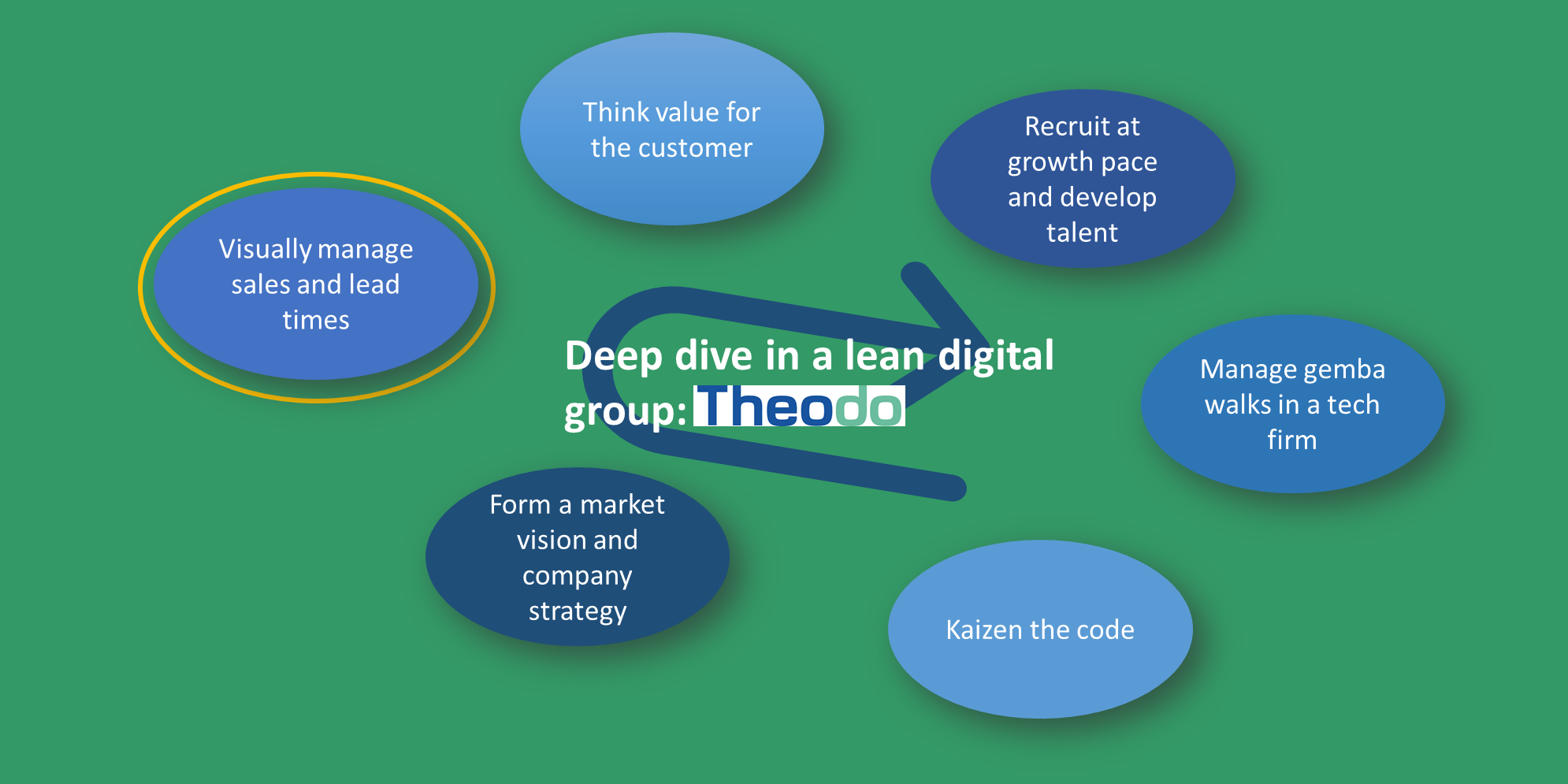
Anticipating the Covid-19 storm
NOTES FROM THE (VIRTUAL) GEMBA – In the last of her series of virtual gemba walks, the author learns how a hospital in the Caribbean island of Martinique relied on Lean Thinking in its fight against the Coronavirus.
Words: Catherine Chabiron, lean author and member of Institut Lean France
It is 6:45 in the morning in Martinique, an island in the French West Indies, and exotic birds are chirping in the background as I begin my video conference call with Benjamin Garel, the Director of the local hospital. “It’s rather a small CHU [university hospital],” Benjamin admits. “Nevertheless, it means 5,000 people working across seven sites.” Given the great distance between Martinique and the rest of France, the hospital manages most medical specialties.
For CHU Martinique, managing Covid-19 required a very demanding ramp-up: on February 1st, 20 people in the organization started working on both the disease itself and the logistics around it. On March 1st, there were 50; by the end of the same month, 1,000! Up until then, no single disease had cumulated more than 20-30 patients in the wards at once (by mid-April there were 159 Covid-19 patients in the hospital). And the ebb was just as sharp, with just about 100 by the end of April.
To understand the magnitude of the upheaval caused by the novel coronavirus, imagine asking 20% of the workers in a manufacturing company, including salespeople and supply chain workers, to suddenly have to support the production of a new product they know nothing about and expecting them to be immediately operational.
THE IMPORTANCE OF COORDINATION AND ASKING QUESTIONS
With such a huge shift in demand, Benjamin and the hospital teams needed to urgently focus three major areas: people, capacity, and logistics.
We all experienced the human reaction to any major change in our lives. First there is shock, then comes denial (“It’s just another flu.”), then anger and depression. Finally, we reach acceptance and develop a will to take positive action. The challenge at CHU Martinique was to find a way to accelerate the transition between these steps so as to reach the reflection and action stage as soon as possible.
This is another example of how the 4F approach described in The Lean Strategy yielded far better results than the traditional command-and-control stance (the 4D approach).

“Just to illustrate,” Benjamin says, “let me tell you the story of the outpatient surgeries. Our hospital was late in developing this concept. Promoting small surgery procedures – with a patient walking in in the morning and out in the evening – is a real added value and a considerable cost reduction.” They had initially addressed the problem in a pure 4D cycle, with a team of experts defining in which of the hospital sites to centralize outpatient surgeries, regardless of the distance between such location and the wards in which these procedures typically took place. They had then decided how to organize the consequent transfer of expertise and equipment to that single site. They drove the project with the usual milestones and reporting gimmicks and were left to deal with daily problems and poor results (the already low percentage of outpatient surgeries further decreased in 2017 and 2018).
“When I took over the position in 2018, I decided to try a bit of 4F,” Benjamin explains. He asked each of the surgery wards to develop their own outpatient surgery process, wherever they were located. “I just asked them to keep me posted on what they were doing, to identify blocking points, so that they could be addressed one by one (find and face). I then helped them to frame the overall approach with the need to accelerate the patient pathway, so that each could contribute to the concept.” It worked: the percentage of outpatient surgeries increased by 14% in 2019.
“4D could be construed as the perfect solution in a crisis, but this is a misconception. One fifth of the hospital was turned into a Covid-19 ward and I very rarely took the decisions myself. I mostly asked questions.” Lean Thinking did not invent the art of facilitating reflection through well-formulated questions (Socrates and other philosophers did it too) but it is clearly the best-known way to speed up the denial-emotion-action transition: if a central decision is made and deemed inadequate by a very educated and experienced member of staff, it will ignite anger and other negative emotions and delay the move to action. During the pandemic ramp-up, Benjamin tells me that this daily questioning allowed the team to move faster and ahead of the central guidelines received from the French central hospital administration.
The find-face concept is also a proven agility enabler. The team at CHU Martinique would spot a problem and immediately get a few key actors to face it in a dedicated daily coordination meeting. At each meeting, every problem-solving group had an opportunity to share learnings and bounce ideas off other groups. They were able to create a Covid-specific ICU regulation within three days of being advised by the ICU that they had started to receive patients presenting possible Covid-19 symptoms.
They did not forget to talk to unions either, on a daily basis, and in a clear 4F and respect for people fashion, they focused on explaining context and constraints (rather than justifying their decisions), so that their interlocutors could fully understand the situation, do their own thinking and make their own proposals.
ANTICIPATING THE EXPONENTIAL GROWTH IN DEMAND

This coordination approach helped CHU Martinique to address the capacity issue. Like all other hospitals in the world, they were facing an exponential demand growth that no organization could imagine – let alone be equipped to face. Benjamin says, “In short, this was the maths: you assign 10 beds to Covid-19, you will have to open 20 more in three days’ time, then another 40 six days later. With demand doubling every three days, we have to find a way to reduce the time to get new beds ready. If it took us longer than three days to prepare those 20 new beds, then we ‘d have two options: either reduce that time and try to achieve the number in less than three days (and get ready to halve that time again for the next increase in demand just three days later) or anticipate the exponential need and prepare 60 beds at once. We worked on both approaches: kaizen and standards were used to accelerate the freeing up of beds, and the “anticipation system” told us that working on 20 bed openings was a signal that we should get into the preliminary stages for the next 40.”
Here, again, constantly framing the problem (the flow doubles every three days) throughout the entire hospital community effectively engaged everyone into taking action and collaborating more closely.
Lean Thinking is also helping to find and face the real problems – which has brought great benefits in the supply chain. We all have cognitive bias, such as our capacity to filter out what is not exactly aligned with our performance objective. Benjamin quotes the example of a cold chamber that regularly records temperatures above the standard: staff maintaining the alarms will say they work fine and that they are not to be blamed, the hospital pharmacy (which focuses on inventory management and replenishment) will ignore the warnings, and the problem will remain unsolved. Another cognitive bias is the mental model that leads us to reduce an issue to something we know (“Don’t worry about Covid-19, It’s going to be just like H1N1.”). Lean Thinking, on the other hand, takes us for a check at the gemba, until we agree on the problem to be solved and its root cause.
Benjamin’s hospital was already facing the usual flu and a few cases of dengue fever when Covid-19 appeared. A bit of genchi genbutsu exposed the potential magnitude of the supply problem: it became clear the hospital would soon be in dire need of PPE, which was already scarce due to the December 2019 strikes against the French government’s pension reform. Unfortunately, PPE quickly became scarce in the rest of the world as well, which meant CHU Martinique had to move to plan B. An initiative was launched to start manufacturing masks and scrubs locally, on the island. The same ability to anticipate problems helped the team to secure precious agents like curare – used in anaesthesia – that proved essential during the Covid emergency.
Benjamin also recalls how paying attention to the hospital’s very old laundry machines before the crisis happened actually paid off. In true lean spirit, he had pushed the technical teams to develop Total Productive Maintenance rather than try and request the funds to purchase new machines. At first, one out of three machines was regularly down; with TPM, the team managed to have the three running whenever they needed them. With the coronavirus crisis, the need to wash PPE for reuse arose and those old machines turned out to be a blessing.
NURTURE AND DEVELOP KEY RESOURCES
Within a month, 1,950 people have been trained in anything from basic ways to protect oneself and prevent infection to specific ICU procedures – not to mention all the lessons learned on Covid-19 itself. Training was based on written standards, whenever available, and on gemba-based teaching and learning (working pairs were formed to enable on-the-job knowledge transfer). Benjamin believes this massive training effort explains why the hospital managed to stop patient-to-caregiver infection after the first week, and caregiver-to-patient infections after the second week. While caution needs to be used in such a complex pandemic, it also seems that the hospital mortality rate remains below the French national average.
As I ask Benjamin how he initiated this lean approach at the hospital, back in 2018, his answer is not what one would expect. He didn’t create a dedicated kaizen office, nor did he train staff on basic lean concepts. He walked the gemba and told the team that everybody’s main focus should be the continuity of healthcare, no matter what might happen. This mantra, repeated over and over again, became so engrained in people’s minds over the past two years that everyone naturally did what they had to do to guarantee healthcare continuity throughout the emergency, despite missing supplies, incredible pressure on resources and caregivers, and a fear of the unknown.
THE AUTHOR

Read more


FEATURE – There is more to logistics than an ancillary process that supports the rest of the company. But then, why do we never have a plan for it, like we do for manufacturing?


INTERVIEW – Earlier this month, we attended a Lean Day at Dreamplace Hotels and Resorts in the Canary Islands. We sat down with two lean leaders to discuss the transformations of their businesses.


NOTES FROM THE GEMBA – The author visits the office of Theodo France and learns how the lean digital company is leveraging lean thinking and practice to support its ongoing growth – even through the pandemic.


SEEN FROM OTHERS – In a new series, we ask experts from outside our community to share thoughts on lean-related topics. This month we meet an economist with an interesting take on the West’s productivity slowdown and its link to learning.

